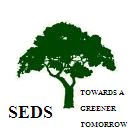In this world where multiple conferences and meetings on reducing carbon dioxide emissions are producing nothing more than hot air (no pun intended), SEDS is looking at new and innovative ways to actually cut down on the output of GHG (Green House gases).
On the 21st and 22nd Zach Willley and Richie Ahuja from EDF (Environmental Defense Fund) from the USA, visited SEDS. They were here to see if SEDS could create a program for Low Carbon Farming (LCF). LCF encompasses different techniques that farmers can implement for reducing their carbon footprint. A possibility that a reduced carbon footprint can be sold off, it is now a matter of putting these carbons on today’s markets. So with the vast expertise of Zach we hope to develop a verifiable method of measuring the GHG offset of farmers in our communities.
What is important to know is that there are universal structures that can easily reduce the carbon footprint of farmers but the methodologies will differ from place to place. Zach who has traveled all around the world (USA, China, Vietnam, India) for initiating these projects and who has an extensive scientific background to handle these things visited SEDS to look at our future possibilities.
During their two day stay, accompanied by Sandeep Loya of the Fair Climate Network, they went through various meetings and on field visits with management, staff and farmers in order to come up with a picture on how agriculture is managed in this part of India.
On the 21st and 22nd Zach Willley and Richie Ahuja from EDF (Environmental Defense Fund) from the USA, visited SEDS. They were here to see if SEDS could create a program for Low Carbon Farming (LCF). LCF encompasses different techniques that farmers can implement for reducing their carbon footprint. A possibility that a reduced carbon footprint can be sold off, it is now a matter of putting these carbons on today’s markets. So with the vast expertise of Zach we hope to develop a verifiable method of measuring the GHG offset of farmers in our communities.
What is important to know is that there are universal structures that can easily reduce the carbon footprint of farmers but the methodologies will differ from place to place. Zach who has traveled all around the world (USA, China, Vietnam, India) for initiating these projects and who has an extensive scientific background to handle these things visited SEDS to look at our future possibilities.
During their two day stay, accompanied by Sandeep Loya of the Fair Climate Network, they went through various meetings and on field visits with management, staff and farmers in order to come up with a picture on how agriculture is managed in this part of India.

 In the fields
In the fields They wanted to learn about the crops which are planted, the different practices farmers use, the soils that are there and how SEDS implements its sustainable agriculture program. Based on this information they hope to come up with a way to make a baseline study of our carbon offset. From there on they can come up with suggestions and techniques on how to reduce this offset. Off course they do not wish that these proposed procedures will harm the farmers in their livelihoods so they need a good idea of what is going on the field.

After their two day visit it was clear that some things can be changed. For example how farmyard manure is stored away and put on the fields. The pits that contain the farmyard manure are open and so release a lot of methane (an even more active GHG than CO2). And when put on the fields the manure usually stays piled up on the surface for a few days, again releasing its methane. So covering up these manure pits and immediately ploughing the fields when the manure is applied could reduce their GHG offset.
They were also impressed on how the sustainable agriculture program already takes up many aspects of LCF, such as low water usage in the Pilot and Demonstrating Activities (PDA) or using biomass as fertilizers instead of chemical fertilizers. In the end a lot of research and calculations still need to be done to grasp the whole picture of the GHG offset but it looks like we are going the right way.
